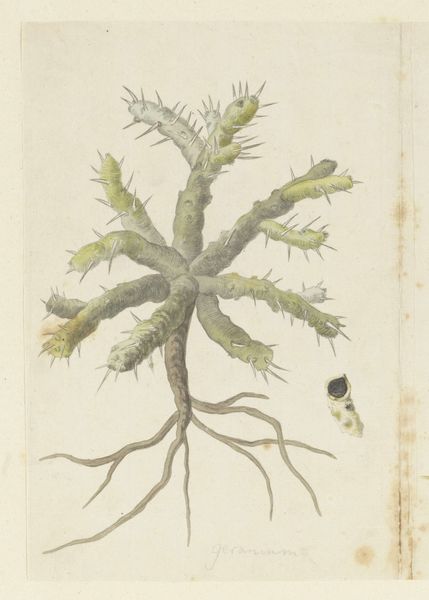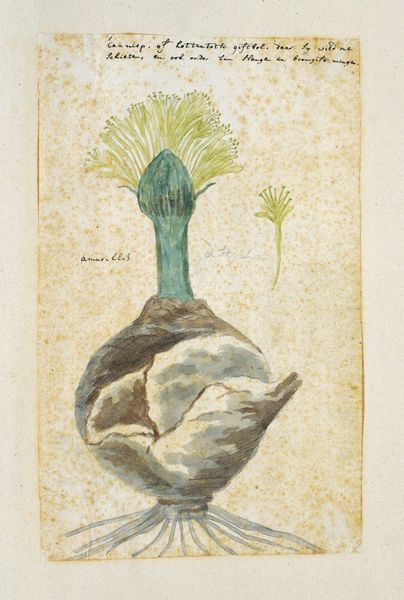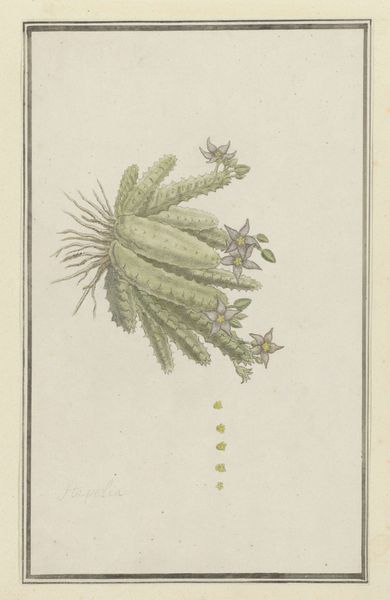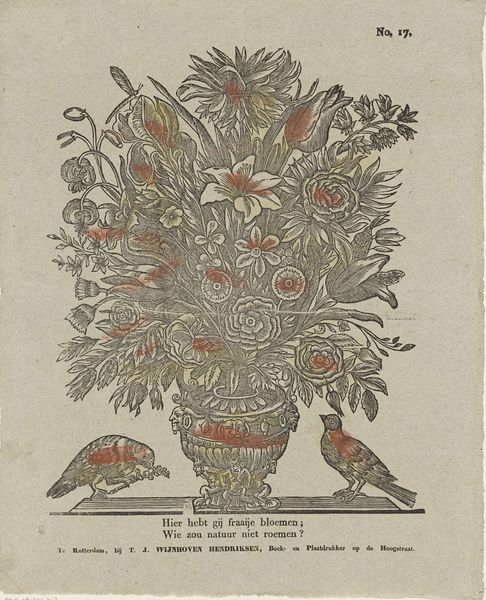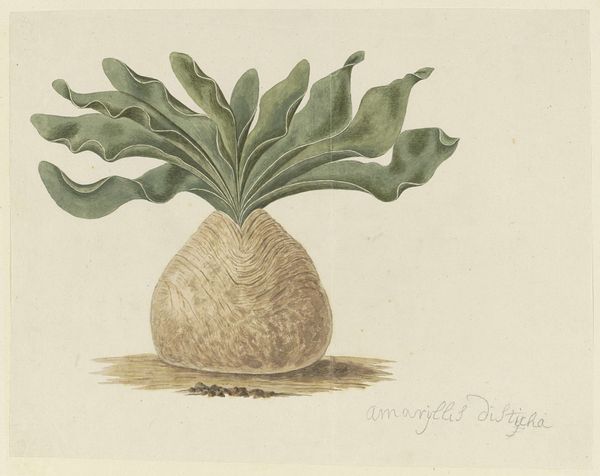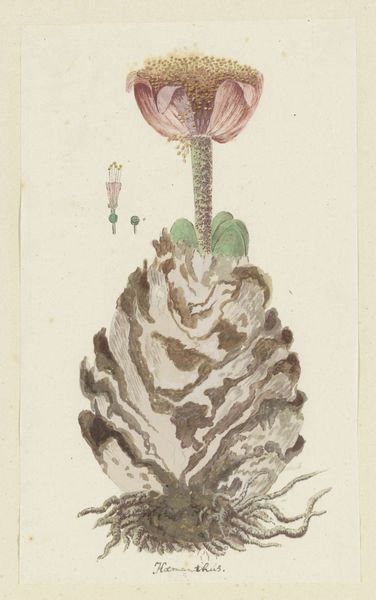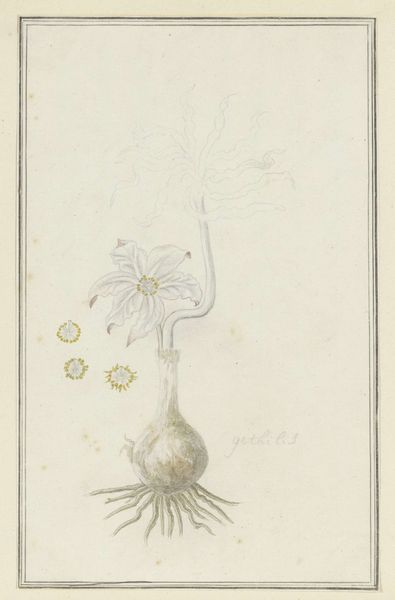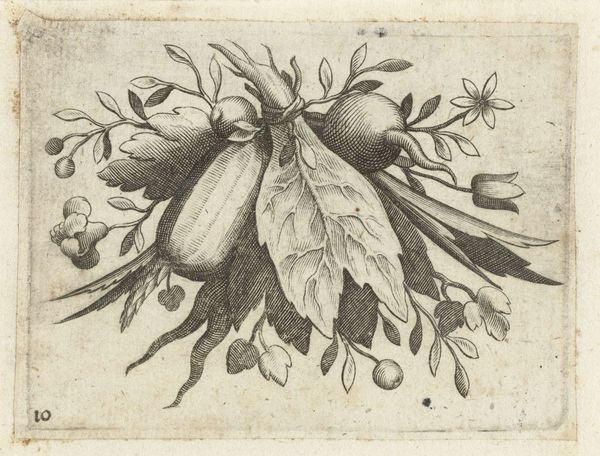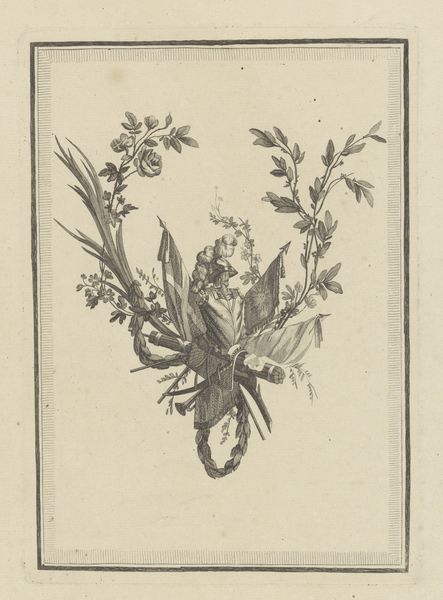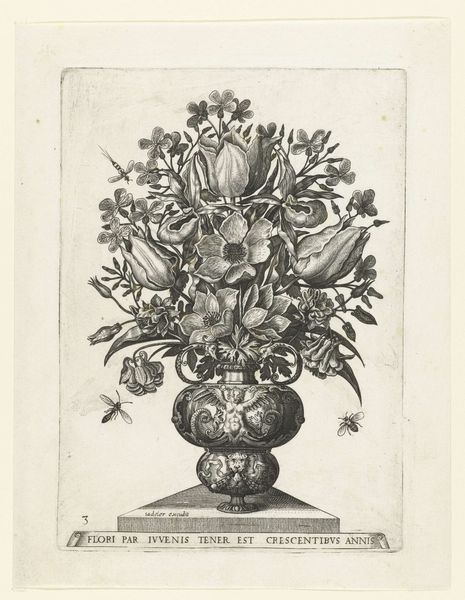
drawing, watercolor, ink
#
drawing
#
landscape
#
watercolor
#
ink
#
naturalism
Dimensions: height 660 mm, width 480 mm, height 245 mm, width 139 mm, height mm, width mm
Copyright: Rijks Museum: Open Domain
Editor: Here we have Robert Jacob Gordon's "Gethyllis afra L (Kukukmakranka)," created between 1777 and 1786. It's rendered in ink and watercolor. It feels so detailed, like a scientific record. What strikes you when you look at it? Curator: The labor is what first gets my attention. Look at the precise lines, the controlled washes of color. This wasn't a quick sketch; it demanded time and a clear investment. Beyond botanical representation, it underscores how such illustrations become commodities, tied to colonial expansion and resource extraction. What do you make of that relationship, the intersection of science and resource control in the late 18th century? Editor: That’s interesting, I hadn't considered the context in that way. The work itself looks so…innocent. It's easy to separate it from something like resource extraction. I am starting to see how someone could ignore the artist and see the work simply for informational value, treating it almost as data. Curator: Precisely. And notice how the artist positions the plant, highlighting its "exotic" qualities for a European audience, furthering their consumption of knowledge and desires for tangible specimens. It also raises the question: Who benefited from this detailed record? Was it the Indigenous communities who understood this plant, or primarily the European scientists and colonizers? What would a drawing by someone with closer ties to the land reveal that this misses? Editor: That perspective really reframes the entire piece. I now find myself looking at this image as not just a benign botanical study, but as evidence of a complex and maybe even exploitative process. Curator: It invites us to reflect on the labor, the power dynamics, and the consumption embedded within even seemingly straightforward representations of the natural world. Editor: Absolutely, seeing the artist’s material process opens a whole new way to understand how something as simple as a botanical drawing played a part in larger historical narratives.
Comments
No comments
Be the first to comment and join the conversation on the ultimate creative platform.

